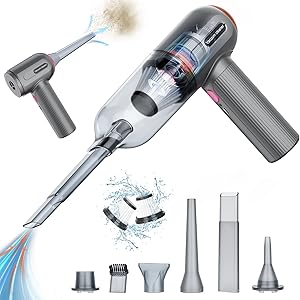In today’s tech-driven world, the ability to effectively troubleshoot technical issues is a vital skill for IT professionals. Mastering tech troubleshooting not only helps in resolving problems swiftly but also enhances overall user satisfaction. This article will explore the essential skills and strategies that can turn any IT expert into a troubleshooting ace, ensuring they are well-prepared for the challenges of modern technology.
Key Takeaways
- Tech troubleshooting is about systematic problem-solving.
- Documentation is key for future reference and learning.
- Effective communication helps bridge the gap between tech and non-tech users.
- A customer-centric approach fosters trust and satisfaction.
- Staying updated with technology trends is crucial for successful troubleshooting.
Understanding The Fundamentals Of Tech Troubleshooting
Defining Tech Troubleshooting
So, what is tech troubleshooting? Well, it’s basically the art of figuring out why something isn’t working and then fixing it. It’s a systematic approach to problem-solving, whether it’s a dodgy internet connection, a software glitch, or a hardware malfunction. It’s not just about knowing what to do, but how to think through the problem logically. It involves a bit of detective work, some technical know-how, and a whole lot of patience. You need to be able to break down complex issues into smaller, manageable steps. Think of it as a puzzle – each piece needs to be examined to see how it fits into the bigger picture. Effective problem-solving techniques are key.
Common Tools Used in Troubleshooting
When it comes to troubleshooting, having the right tools can make all the difference. We’re not just talking about screwdrivers and network cables (though those can be handy too!). Software tools are just as important. Here’s a quick rundown:
- Diagnostic Software: These tools help identify hardware and software issues. Think memory tests, disc checks, and system information utilities.
- Network Analysers: These are essential for diagnosing network problems. They can monitor network traffic, identify bottlenecks, and detect connectivity issues.
- Remote Access Tools: These allow you to access and control computers remotely, which is super useful for helping users who aren’t in the same location. Remote Support is a must-have.
Having a well-stocked digital toolkit is essential. Knowing how to use these tools effectively can save you a lot of time and frustration. It’s about being prepared for anything that might come your way.
The Importance of Documentation
Documentation is often overlooked, but it’s a vital part of tech troubleshooting. Keeping detailed records of problems, solutions, and configurations can save you a lot of time in the long run. Imagine having to solve the same problem multiple times without any notes – it’s a recipe for madness! Good documentation helps you:
- Track Recurring Issues: Identify patterns and prevent future problems.
- Share Knowledge: Enable other team members to learn from your experiences.
- Improve Efficiency: Quickly find solutions to known problems.
| Date | Issue Description | Solution |
|---|---|---|
| 2025-05-20 | Network connectivity issues on the third floor | Reset the router and updated the firmware. |
| 2025-05-22 | Software crash on user’s computer | Reinstalled the application and updated the drivers. |
| 2025-05-24 | Printer not printing | Cleared the print queue and checked the network connection. |
Developing A Troubleshooting Mindset
It’s easy to get bogged down in the technical details, but a good IT professional needs more than just technical skills. Developing the right mindset is just as important. It’s about how you approach problems, how you think, and how you learn from your mistakes. Let’s have a look at some key aspects of cultivating a troubleshooting mindset.
Analytical Thinking Techniques
Analytical thinking is at the heart of effective troubleshooting. It’s about breaking down complex problems into smaller, more manageable parts. Start by clearly defining the problem. What are the symptoms? When did it start? What systems are affected? Then, gather as much information as possible. Look at logs, check configurations, and talk to users. Once you have enough data, start analysing it. Look for patterns, correlations, and anomalies. Don’t jump to conclusions too quickly. Consider all possible causes and test your hypotheses systematically. Analytical thinking is a skill that improves with practise, so embrace every troubleshooting opportunity as a chance to hone your abilities. For example, understanding user requirements is crucial for effective problem-solving.
Systematic Problem-Solving Approaches
A systematic approach can save you time and prevent you from overlooking important details. One popular method is the scientific method: observe, hypothesise, test, and conclude. Another is the ‘top-down’ approach, where you start with the overall system and gradually narrow down the source of the problem. Alternatively, you could use a ‘bottom-up’ approach, starting with individual components and working your way up. Whatever method you choose, the key is to be consistent and methodical. Document your steps, record your findings, and don’t be afraid to backtrack if necessary. A structured approach not only helps you solve the problem but also makes it easier for others to understand and learn from your work.
Learning From Past Issues
Every problem you solve is a learning opportunity. Don’t just fix the issue and move on. Take the time to understand what caused it and how you can prevent it from happening again. Document the problem, the solution, and the steps you took to resolve it. Share your knowledge with your team. Create a knowledge base of common issues and solutions. Encourage others to contribute. By learning from past issues, you can build a more resilient and efficient IT environment.
Reflecting on past incidents is a great way to improve your troubleshooting skills. What went well? What could you have done better? What did you learn? By asking these questions, you can identify areas for improvement and develop strategies to avoid similar problems in the future.
Essential Technical Skills For IT Professionals
Being good at the techy stuff is, well, essential for IT professionals. It’s not just about knowing the latest buzzwords; it’s about having a solid base of skills you can build on. Let’s have a look at some key areas:
Networking Knowledge
Understanding how networks work is absolutely vital. This includes knowing about TCP/IP, DNS, routing, and all that jazz. It’s not enough to just know what these things are; you need to understand how they interact. For example, if a user can’t access a website, you need to be able to trace the route the data is taking and identify where the problem lies. This might involve using tools like ping, traceroute, or network analysers. A good grasp of networking also helps with security, allowing you to identify potential vulnerabilities and implement appropriate safeguards. You should also be familiar with different network topologies and protocols.
Software Proficiency
Software is the lifeblood of most organisations, so IT pros need to be comfortable working with a wide range of applications. This doesn’t necessarily mean being an expert in everything, but it does mean having a good understanding of how different types of software work and how they interact with each other. This includes operating systems (Windows, macOS, Linux), productivity suites (Microsoft Office, Google Workspace), and various specialist applications used by different departments. Being able to troubleshoot software issues, install and configure applications, and provide user support are all key skills. Understanding computer systems is also important.
Hardware Troubleshooting Techniques
While a lot of IT is now focused on software and cloud services, hardware still matters. Being able to diagnose and fix hardware problems is a valuable skill. This could involve anything from replacing a faulty hard drive to troubleshooting a network card issue. It’s important to have a good understanding of the different components of a computer and how they work together. You should also be familiar with common hardware diagnostic tools and techniques. A systematic approach to troubleshooting is essential, starting with the simplest possible solutions and working your way up to more complex ones.
Hardware issues can be tricky, but often a methodical approach will get you there. Start with the basics: check the power supply, look for loose connections, and listen for any unusual noises. Don’t be afraid to open things up and have a look inside, but always remember to take appropriate safety precautions.
Effective Communication In Tech Troubleshooting

Communication is really important in IT. It’s not just about knowing your stuff; it’s about explaining it to others, sometimes people who don’t have a clue about tech. I remember once trying to explain a server issue to a marketing person – it was like speaking a different language! So, let’s look at how to get better at talking tech.
Translating Technical Jargon
One of the biggest challenges is turning tech speak into plain English. You need to be able to explain complex things simply. Think of it like this: you’re a translator. No one wants to hear about bits and bytes if they just want their email working. Instead, focus on the impact: "Your email is down because the server is having a problem, and we’re working to fix it".
Documenting Solutions Clearly
Writing things down is super important. If you fix something, write down how you did it. This helps you later, and it helps your colleagues. Imagine if every time someone fixed the printer, they wrote down what they did. No more endless Googling! Here’s what you should include:
- Problem description
- Steps to resolve
- Any commands used
- Date and time of resolution
Good documentation isn’t just about recording what you did; it’s about making it easy for someone else to understand and repeat your actions. It’s about saving time and preventing future headaches.
Collaborating With Non-Technical Teams
Working with people who aren’t techy can be tricky. They might not understand what you do, or why it takes so long. The key is to be patient and explain things clearly. Don’t get annoyed if they ask "stupid" questions – there are no stupid questions, only unclear explanations. Also, remember to listen to their needs. What do they actually want? What are they trying to achieve? Understanding their perspective helps you find better solutions. Effective communication skills are key to success.
Customer-Centric Approaches To Troubleshooting

It’s easy to get lost in the tech side of IT, but at the end of the day, it’s all about the people using the systems. A customer-centric approach means putting their needs first, even when troubleshooting gets tricky. It’s about more than just fixing the problem; it’s about making the whole experience as smooth as possible for the user. This involves understanding their level of technical skill, their frustrations, and their goals. By focusing on the customer, you can build trust and improve satisfaction, which ultimately benefits the entire organisation. Aaron Taylor emphasises the importance of understanding customer context in call centres.
Understanding User Needs
To truly help someone, you need to know what they’re trying to achieve. This means actively listening to their description of the problem and asking clarifying questions. Don’t just jump to conclusions based on the error message; take the time to understand the user’s perspective. What were they doing when the problem occurred? What are they hoping to accomplish? The more you understand their needs, the better you can tailor your solution.
- Ask open-ended questions.
- Listen actively and take notes.
- Confirm your understanding by summarising their issue.
Providing Timely Support
No one likes waiting for help, especially when technology is preventing them from doing their job. Providing timely support is about more than just speed; it’s about setting expectations and keeping the user informed. Let them know when they can expect a resolution and provide regular updates on your progress. Even if you don’t have an immediate fix, a quick acknowledgement can go a long way in reducing frustration.
Remember that every interaction is an opportunity to build or damage trust. A quick, helpful response, even if it’s just to say you’re working on it, can make a big difference.
Building Trust Through Communication
Trust is earned, not given. In IT, building trust means being transparent, honest, and reliable. Explain technical issues in plain language, avoid jargon, and be upfront about any limitations or potential risks. If you make a mistake, own up to it and explain how you’ll prevent it from happening again. By communicating clearly and honestly, you can build strong relationships with your users and foster a culture of trust.
| Communication Style | Impact on Trust |
|---|---|
| Clear and Concise | Increases |
| Jargon-Heavy | Decreases |
| Honest and Open | Increases |
| Evasive | Decreases |
- Use plain language.
- Be transparent about the process.
- Follow through on your promises.
Staying Updated With Emerging Technologies
It’s a fact: the tech world moves fast. What’s cutting-edge today is old news tomorrow. For IT professionals, staying still means falling behind. Continuous learning isn’t just a nice-to-have; it’s a must-have. You need to keep your skills sharp and your knowledge current to stay relevant.
Continuous Learning Strategies
Keeping up with the latest tech doesn’t have to be a chore. Think of it as an investment in yourself. Here are a few ways to stay in the loop:
- Online Courses: Platforms like Coursera and Udemy offer online learning platforms on pretty much any tech topic you can imagine. They’re great for structured learning and often come with certifications.
- Industry Blogs and Newsletters: Subscribe to blogs and newsletters that cover your areas of interest. This way, you get bite-sized updates delivered straight to your inbox.
- Attend Webinars and Conferences: These events are a fantastic way to hear from experts, network with peers, and get a sneak peek at what’s coming down the line. Plus, many conferences offer workshops and training sessions.
It’s easy to get overwhelmed by the sheer volume of new information. The key is to focus on the areas that are most relevant to your job and your career goals. Don’t try to learn everything at once. Instead, set realistic goals and break down your learning into manageable chunks.
Adapting To New Tools
New tools and technologies are constantly emerging, and it’s important to be able to adapt to them quickly. This means being willing to experiment, learn from your mistakes, and embrace change. Here’s how:
- Hands-On Practise: The best way to learn a new tool is to use it. Set up a test environment and start playing around. Don’t be afraid to break things – that’s how you learn.
- Seek Out Mentors: Find someone who’s already proficient in the tool and ask for guidance. A mentor can help you avoid common pitfalls and accelerate your learning.
- Contribute to Open Source Projects: Working on open source projects is a great way to gain experience with new tools and technologies, and it also allows you to collaborate with other developers.
Participating In Professional Development
Professional development isn’t just about attending training courses. It’s about taking ownership of your career and actively seeking out opportunities to grow. Here are some ideas:
- Join Professional Organisations: Organisations like the British Computer Society (BCS) offer resources, networking opportunities, and professional certifications.
- Get Certified: Certifications demonstrate adaptability and show that you have a certain level of knowledge and skill in a particular area. They can also boost your career prospects.
- Network with Peers: Attend industry events, join online communities, and connect with other IT professionals. Networking can help you stay informed about new trends, find mentors, and discover new opportunities.
Staying updated with emerging technologies is an ongoing process. By embracing continuous learning, adapting to new tools, and participating in professional development, you can ensure that you remain a valuable asset to your organisation and stay ahead of the curve.
The Role Of Cybersecurity In Troubleshooting
Identifying Security Vulnerabilities
When you’re fixing tech issues, it’s easy to just focus on getting things working again. But you can’t forget about security. Every problem could be a sign of something bigger, like a security hole someone could exploit. You need to be able to spot these weaknesses, whether it’s dodgy software, weak passwords, or network settings that aren’t quite right. It’s about thinking like a hacker to stay one step ahead.
Implementing Best Practises
Once you’ve found those vulnerabilities, you need to fix them, and that means putting solid security measures in place. This isn’t just about slapping on a quick fix; it’s about building a strong defence. Think about things like:
- Regular security audits.
- Strong password policies.
- Keeping software updated.
- Using firewalls and intrusion detection systems.
It’s about creating a culture of security awareness, so everyone knows their part in keeping things safe. This includes training staff to recognise phishing attempts and other social engineering tactics.
Responding To Cyber Threats
Even with the best defences, sometimes things still go wrong. That’s when you need to be ready to react fast. Having a plan in place for dealing with cyber attacks is vital. This means knowing who to contact, how to isolate affected systems, and how to recover data. It also means learning from each incident to improve your security posture for the future. It’s a constant cycle of protect, detect, respond, and recover.
Wrapping Up
So, there you have it. Mastering tech troubleshooting isn’t just about knowing your way around a computer or fixing a network issue. It’s about blending those technical skills with a good dose of soft skills. Being able to communicate well, think on your feet, and adapt to new challenges is just as important. The tech world is always changing, and if you want to keep up, you need to be ready to learn and grow. Whether you’re just starting out or you’ve been in the game for a while, honing these skills will help you tackle whatever comes your way. Remember, it’s not just about solving problems; it’s about making sure you can do it effectively and with a smile.
Frequently Asked Questions
What is tech troubleshooting?
Tech troubleshooting is the process of identifying and fixing problems with technology, like computers and software.
Why is documentation important in troubleshooting?
Documentation helps keep track of problems and solutions, making it easier to resolve future issues.
What skills do IT professionals need for troubleshooting?
IT professionals need skills in networking, software, and hardware to effectively troubleshoot problems.
How can I improve my problem-solving skills?
You can improve by practising analytical thinking and working on real-life problems.
Why is communication important in tech troubleshooting?
Good communication helps explain technical issues to others and ensures everyone understands the solutions.
How can I stay updated with new technologies?
You can stay updated by taking courses, attending workshops, and following tech news.






